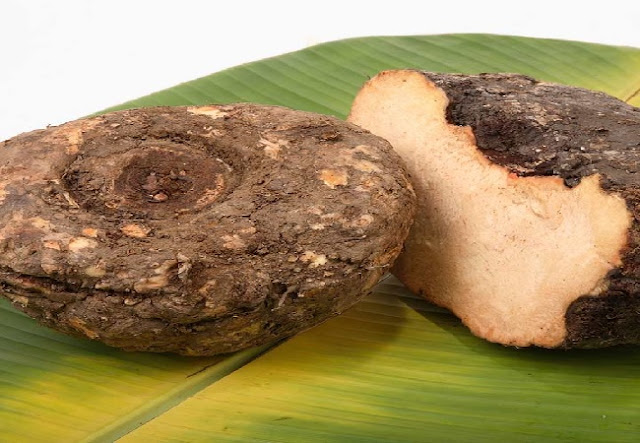Elephant Foot Yam Cultivation in India; A complete information Guide
Elephant Foot Yam Cultivation in India; A complete information Guide
Elephant Foot (Amorphophallus campanulatus Blume.) belongs to the family Araceae. Elephant foot is an economical crop. It is cultivated for its corm and is used as a vegetable. in action it is stomachic and tonic, used in piles and given as a restorative in dyspepsia and debility, etc. Its root is used in boils and ophthalmia and also as an emmenagogue.
Other Local names of Elephant Foot Yam;
Nutritive Value of Elephant Foot Yam ;
|
Nutrient |
Value |
Nutrient |
Value |
|
Moisture |
78.7 g |
Protein |
1.2 g |
|
Fat |
0.1 g |
Mineral |
0.87 g |
|
Fibre |
0.8 g |
Carbohydrate |
18.4 g |
|
Calories |
79 |
Calcium |
50 mg |
|
phosphorus |
34 mg |
Iron |
0.6 mg |
|
Vitamin A |
434 IU |
Thiamine |
0.06 mg |
|
Riboflavin |
0.07 mg |
Nicotinic acid |
0.70 mg |
Health Benefits of Elephant Root Yam;
2)The yam may help reduce cholesterol levels.
3) It can serve as an anticoagulant (blood thinner) to improve
4) Elephant foot yam may even help maintain hormonal
5) The presence of Vitamin C can help delay aging.
6) Elephant foot yam may also benefit patients who suffer
8) It may help reduce muscle spasms.
Climate Requirement for elephant root or yam cultivation;
Soil and its preparation for Elephant Foot Yam ;
Light soils with a pH range of 5.5-7 are most suitable for its cultivation. The soils must be free from bad drainage. The land is prepared by giving 5 to 6 ploughings.
Important Varieties of Elephant Foot Yam ;
There are two distinct types of corms, such as:
(ii) The other type has daughter corms growing on parent corm and much superior to the former type in edible quality and is almost non-irritating if cooked properly. Its seed is more expensive and its yield is less but the product fetches a better price in the market.
Sowing of the seed of Elephant Foot Yam;
(a) Sowing time. Elephant foot is sown from the middle of February to the middle of June. But the best time for sowing this crop is the Middle of May to the middle of June.
(b) Seed rate. The seed rate is 20.00 to 25.00 kg per acre.
Manuring in Elephant Foot yam
Apply 5-6 tonnes of FYM at the time of the last ploughing and apply 40 kg Nitrogen, 60 kg Phosphoric acid, and 50 kg Potassium per acre at 45 days after the sowing and after one month top-dressed with N;K in the ratio of 40:50 significantly increased the yield of corm
Intercultural operations in Elephant foot yam
Two or three hoeings should be given to control the weed and to make the soil loose. Plants are earthed up three months after sowing.
Irrigation in elephant Foot Yam
The crop is irrigated well during the summer season. No irrigation is needed during the rainy season.
Harvesting of Elephant Foot Yam
The crop is harvested when the top starts withering in the month of October to November and it is done by digging the corms individually by a spade.
The yield of Elephant Foot Yam ;
The yield is about 12,000 to 16,000 kg per acre. its average yield per hectare is about seven times the weight of corms planted.




